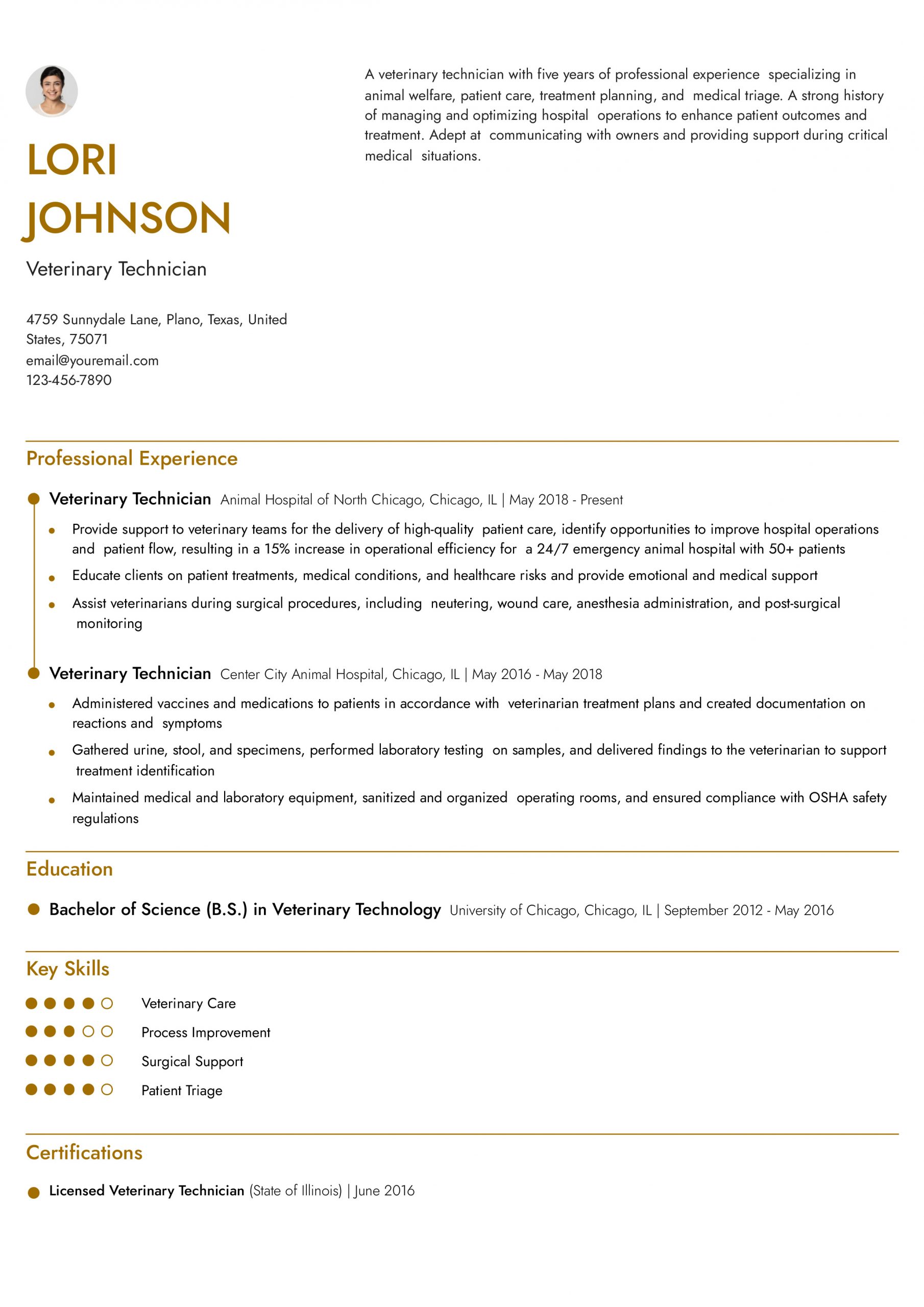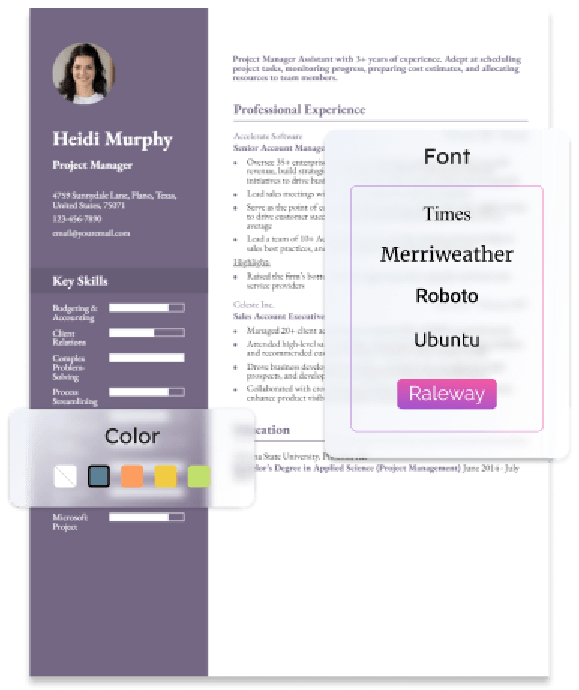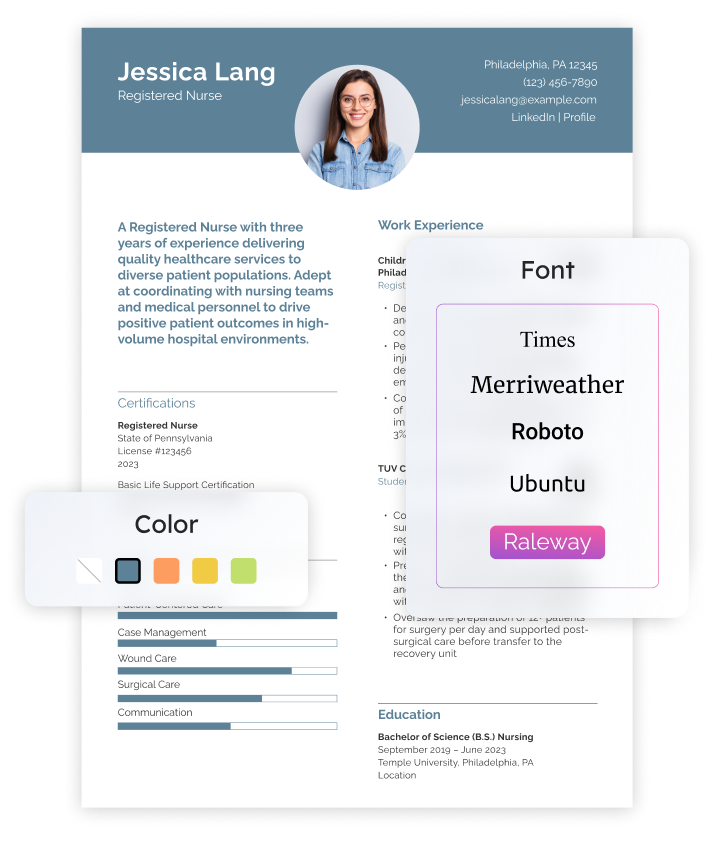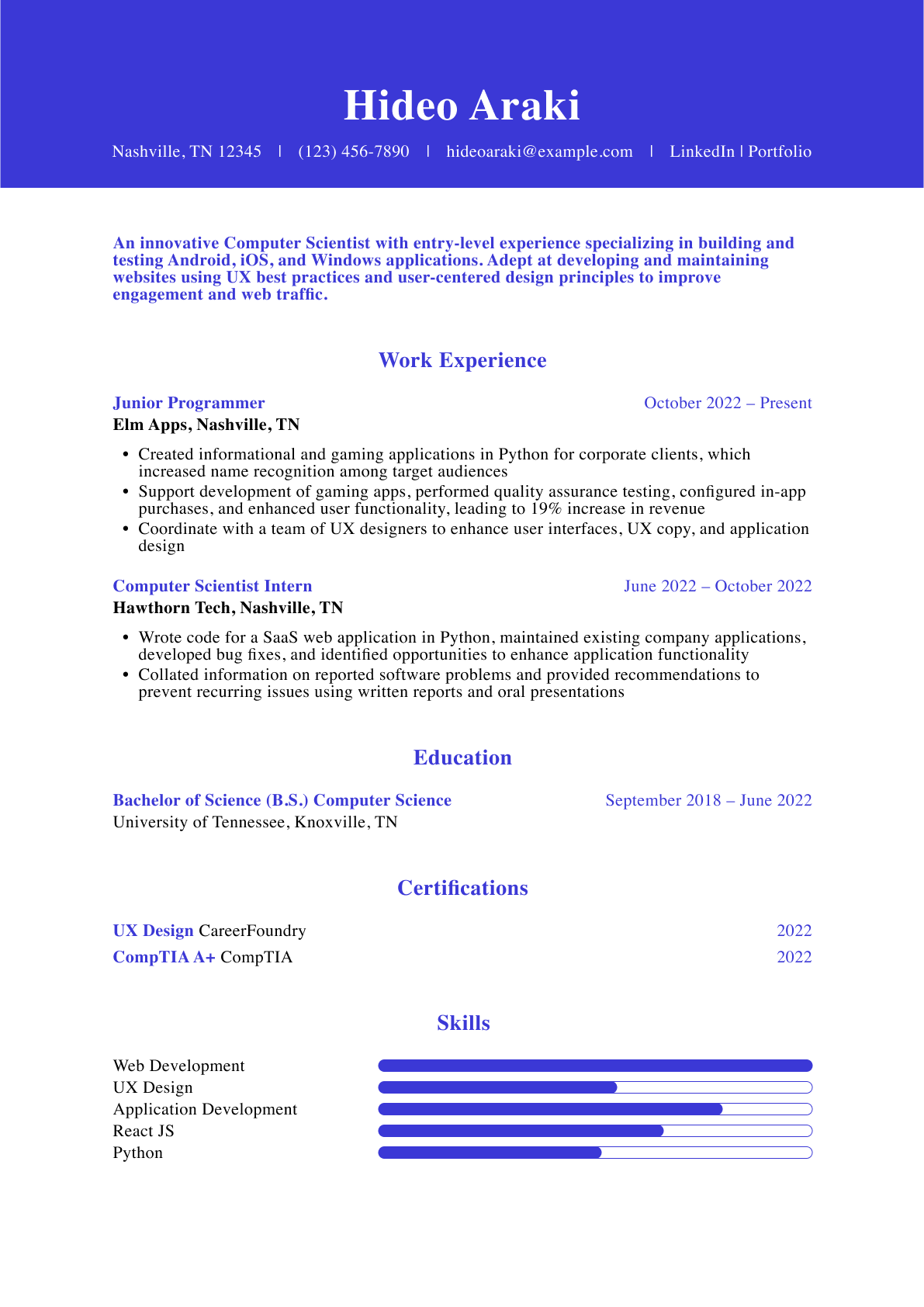To write a compelling veterinary technician resume, feature your experience treating animals and knowledge of veterinary care on your resume. The nurses of the animal world, these technicians support veterinarians during everything from routine care exams to operations. Learn how to present your skills and experience so you can take the next step in your career path.
Most Popular Veterinary Technician Resumes
Veterinary Technician Resume Example
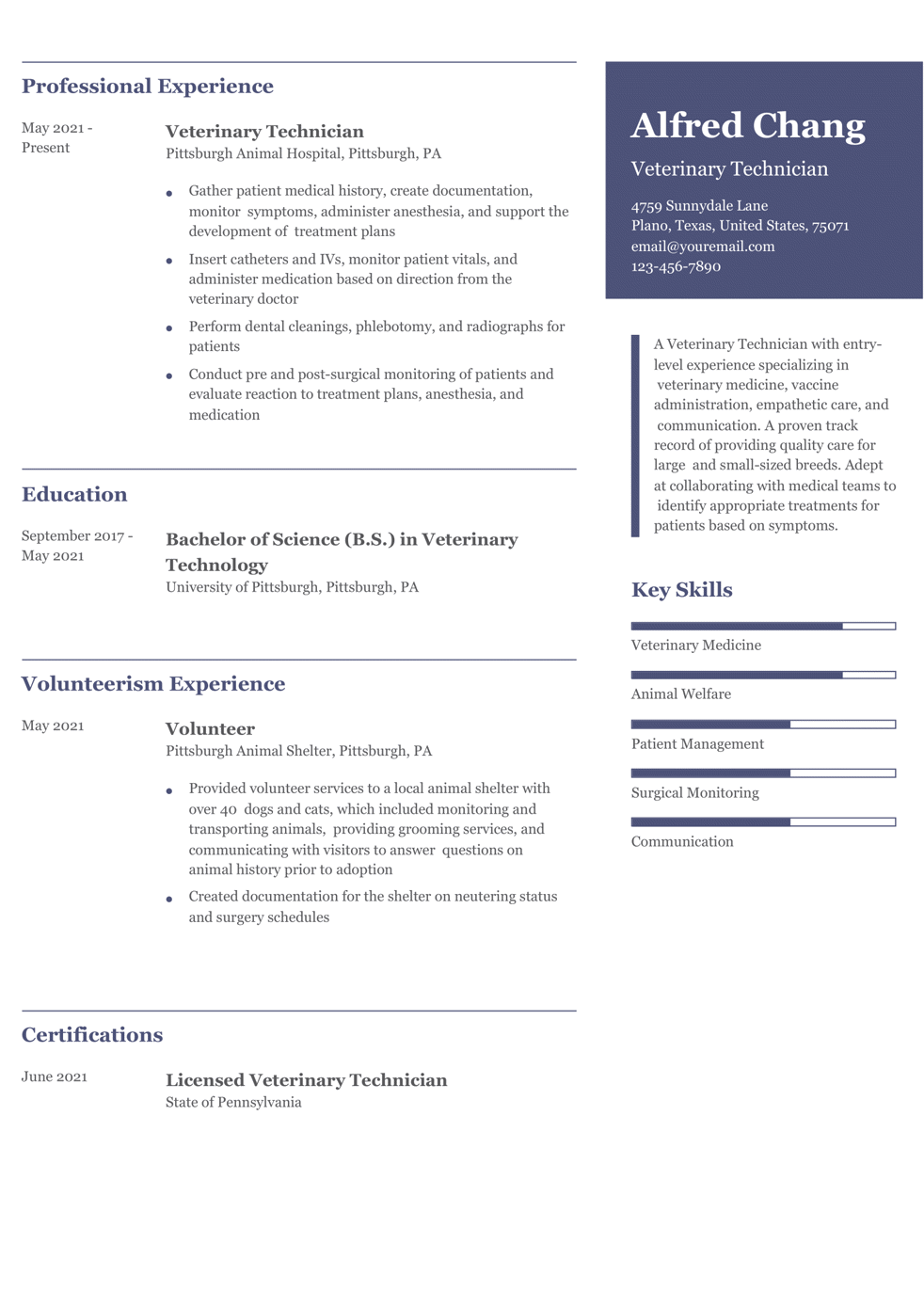
Why this resume works:
This resume effectively balances technical expertise with compassionate care. It highlights the candidate’s practical experience and certifications. Explore more tips at How to Make a Resume.
Mid-Level Veterinary Technician Resume Example
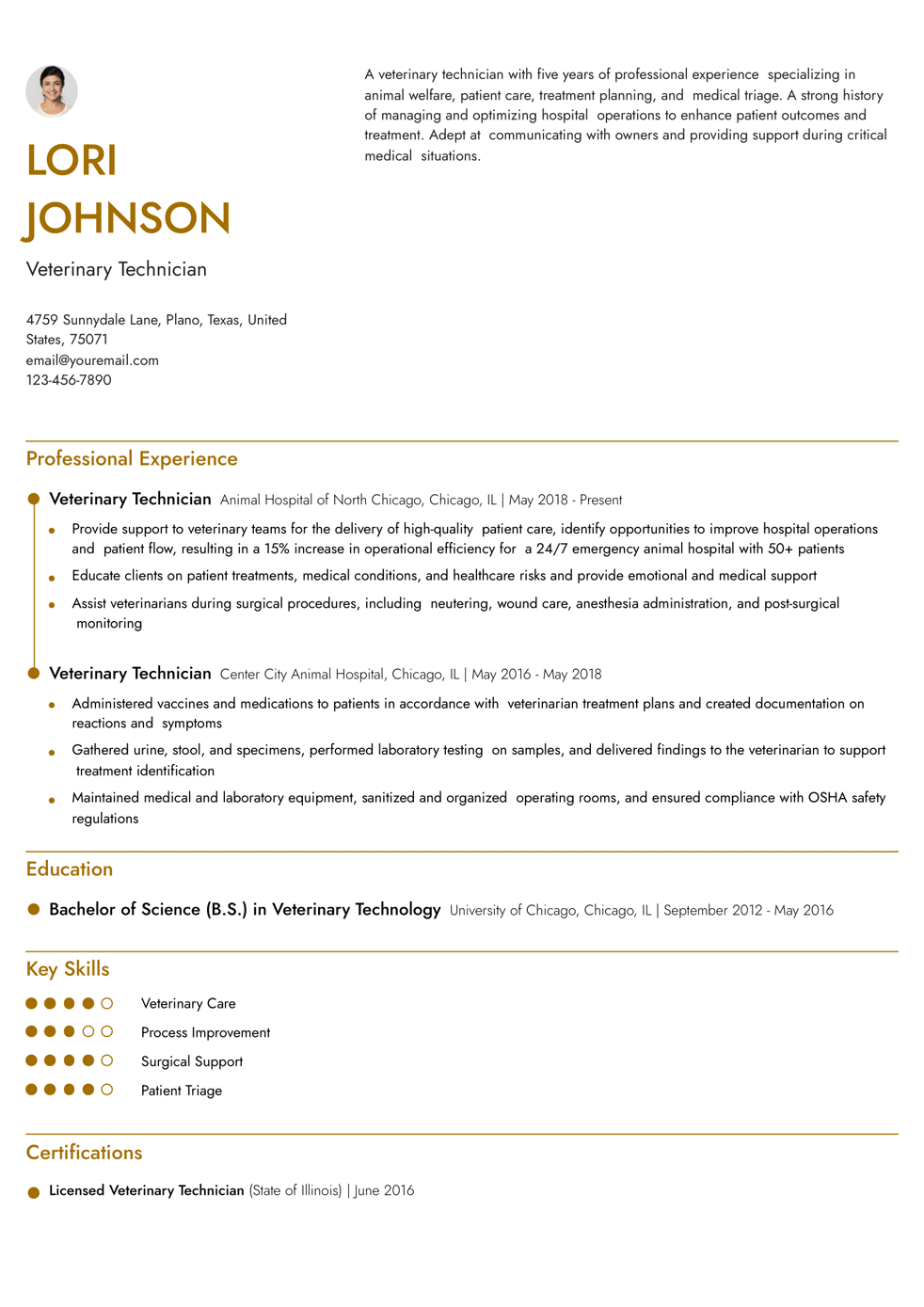
Why this resume works:
The resume emphasizes operational improvements and empathetic care while showcasing strong surgical and medical skills. Learn how to structure similar accomplishments at Resume Skills.
Senior Veterinary Technician Resume Example
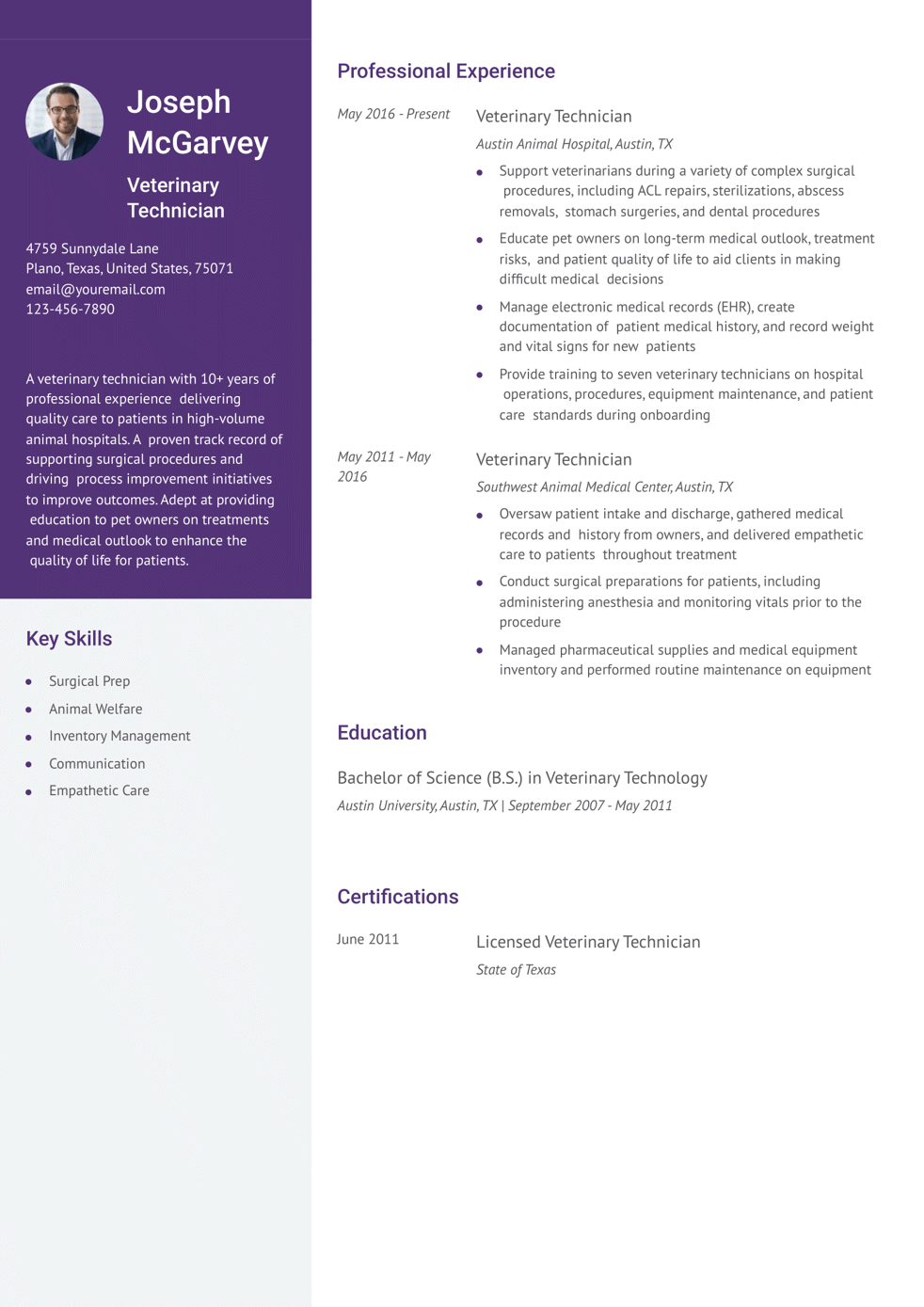
Why this resume works:
This resume stands out with a focus on leadership, operational improvements, and advanced surgical support skills. Discover more about showcasing technical expertise at Resume Summary Examples.
Animal Care Technician Resume Example
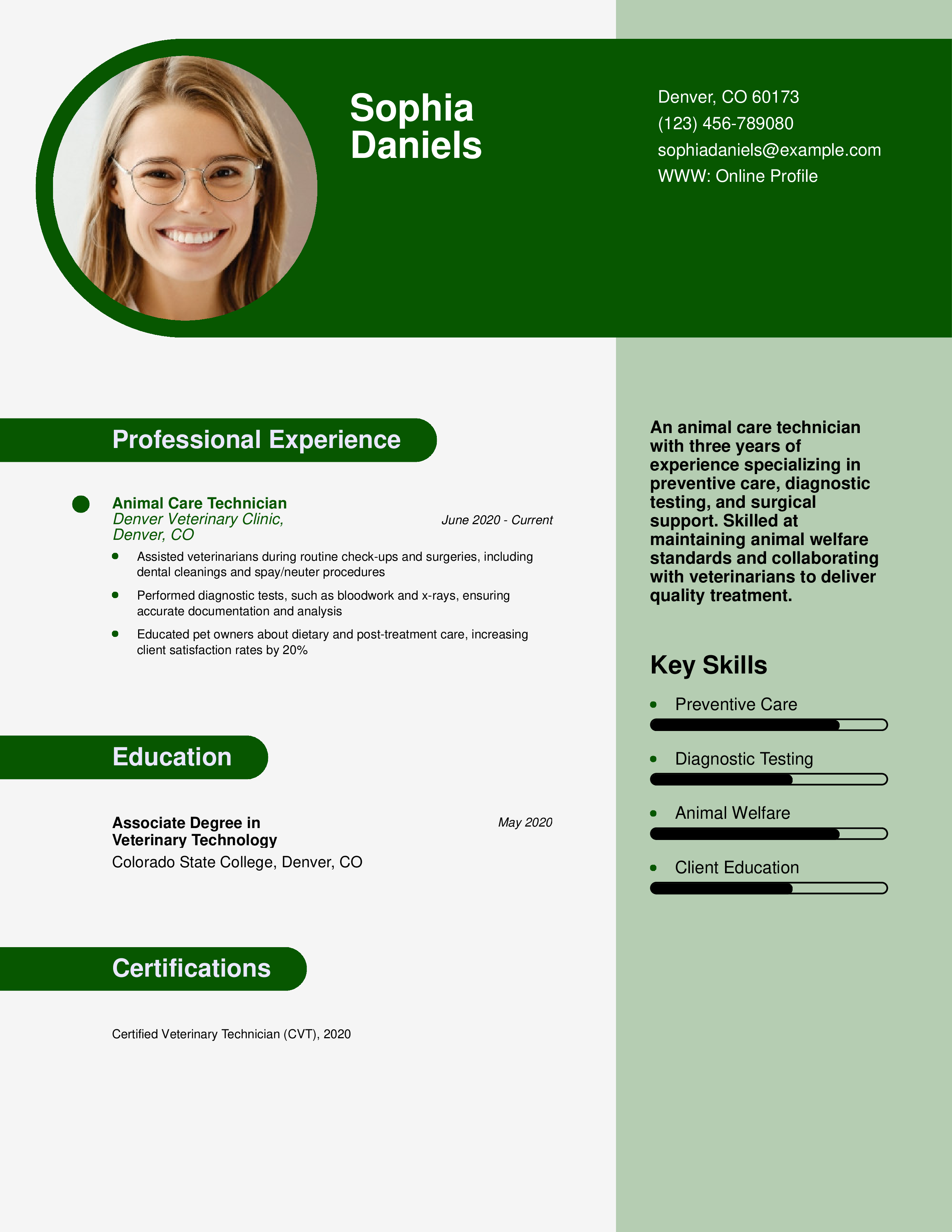
Why this resume works:
This resume highlights diagnostic and preventive care expertise while demonstrating an ability to educate clients effectively. Explore more at Customer Service Skills Resume.
Emergency Veterinary Technician Resume Example
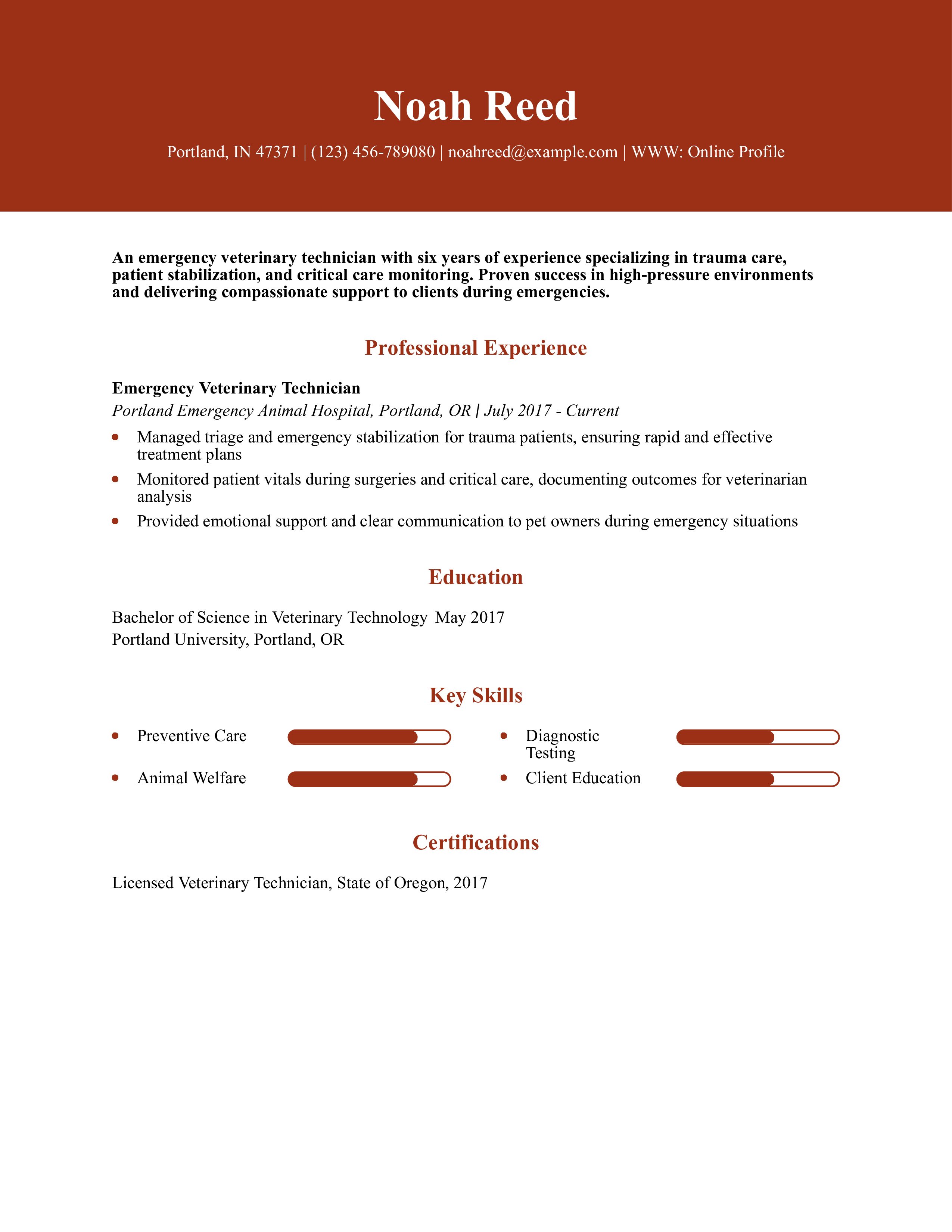
Why this resume works:
This resume effectively emphasizes the candidate's ability to work under pressure while maintaining high care standards. Find more resume structuring tips at Best Resume Formats.
Veterinary Oncology Technician Resume Example
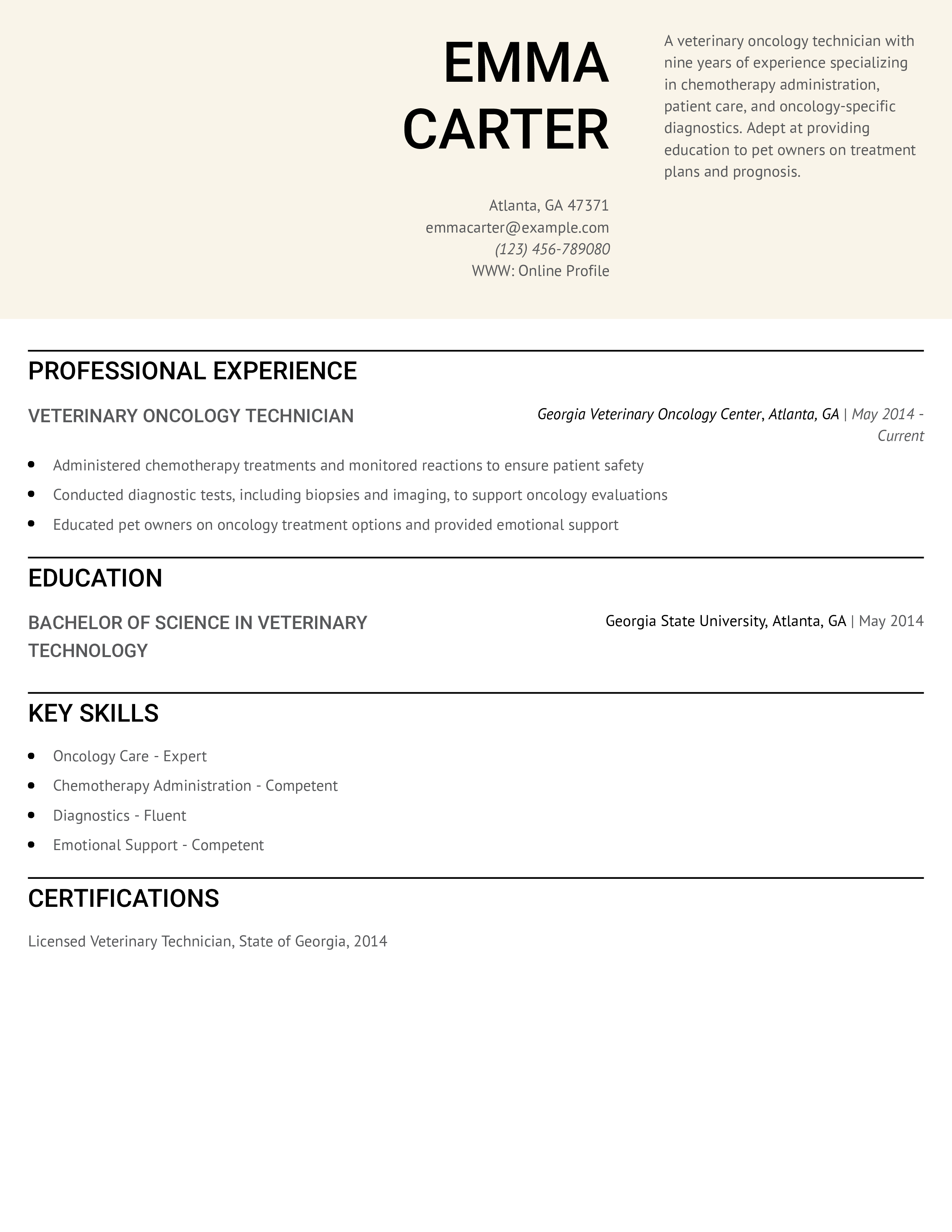
Why this resume works:
This resume highlights specialized oncology expertise while showcasing patient and client care skills. Learn more about effective certification presentation at How to List Certifications on Resume.
Our templates are crafted by professional resume writers to make creating your resume quick, easy, and effective.
- Professional resume template downloads
- Customized cover letter generation
- AI resume writing support
- Career-building resources and advice
Veterinary Technician Text-Only Resume Templates and Examples
How To Write a Veterinary Technician Resume
1. Write a brief summary of your veterinary technician qualifications
The profile is a short summary of your resume that gives hiring managers an immediate idea of whether you fit the position. It’s also a great opportunity to fit in keywords and must-have qualifications from the job description. Include a few common procedures you’ve experienced, such as administering vaccines and doing nail trims, and note which species you have worked with. Most veterinary offices will be looking for techs who work with cats and dogs, but previous experience with small animals like rabbits or amphibians can make you a more attractive candidate.
Senior-Level Profile Example
A veterinary technician with 10+ years of professional experience delivering quality care to patients in high-volume animal hospitals. A proven track record of supporting surgical procedures and driving process improvement initiatives to improve outcomes. Adept at providing education to pet owners on treatments and medical outlook to enhance the quality of life for patients.
Entry-Level Profile Example
A Veterinary Technician with entry-level experience specializing in veterinary medicine, vaccine administration, empathetic care, and communication. A proven track record of providing quality care for large and small-sized breeds. Adept at collaborating with medical teams to identify appropriate treatments for patients based on symptoms.
2. Create a powerful list of your veterinary technician experience
Being a veterinary technician is about supporting veterinarians and providing the best possible care to your animal patients. The professional experience section of your resume should focus on all the tasks you can handle so the veterinarian can provide primary care.
Consider dedicating each bullet to a particular type of care. For example, one bullet might highlight pre-surgical tasks, such as administering IVs, shaving and prepping the surgical site, and monitoring patient vital signs. Another might discuss your responsibilities in educating pet owners on their pet’s conditions and ongoing care needs.
Senior-Level Professional Experience Example
Veterinary Technician, Austin Animal Hospital, Austin, TX
May 2016 – Present
- Support veterinarians during a variety of complex surgical procedures, including ACL repairs, sterilizations, abscess removals, stomach surgeries, and dental procedures
- Educate pet owners on long-term medical outlook, treatment risks, and patient quality of life to aid clients in making difficult medical decisions
- Manage electronic medical records (EHR), create documentation of patient medical history, and record weight and vital signs for new patients
- Provide training to seven veterinary technicians on hospital operations, procedures, equipment maintenance, and patient care standards during onboarding
Entry-Level Professional Experience Example
Veterinary Technician, Pittsburgh Animal Hospital, Pittsburgh, PA
May 2021 – Present
- Gather patient medical history, create documentation, monitor symptoms, administer anesthesia, and support the development of treatment plans
- Insert catheters and IVs, monitor patient vitals, and administer medication based on direction from the veterinary doctor
- Perform dental cleanings, phlebotomy, and radiographs for patients
- Conduct pre and post-surgical monitoring of patients and evaluate reaction to treatment plans, anesthesia, and medication
3. Include your veterinary technician education and certifications
Being a veterinary technician requires in-depth knowledge of small animal anatomy and physiology and an understanding of what medications are prescribed for what conditions. An associate degree is usually the minimum required education level for a vet tech, but large practices or other organizations like zoos may be looking for candidates with a bachelor’s degree.
In addition to a degree, most states require veterinary technicians to be licensed. List your license number beside your education for easy reference. Also list any advanced specialties, such as Veterinary Nurse Specialist, here.
Education
Template
- [Degree Name]
- [School Name], [City, State Abbreviation] | [Graduation Year]
Example
- Bachelor of Science (B.S.) Veterinary Technology
- Austin University, Austin, TX | 2011
Certifications
Template
- [Certification Name], [Awarding Organization], [Completion Year]
Example
- Licensed Veterinary Technician, State of Texas | 2011
4. Include a list of your veterinary technician skills and proficiencies
The hiring manager should have a good understanding of your skills and strengths after reading your resume. One way to ensure this information is easy to find is to use a bulleted skills list. Skim the job description to find relevant required skills and qualifications and add these to your resume.
Skills can be medical proficiencies, such as dental cleanings or catheter placement, or they can be soft skills, such as communicating with pet owners and providing empathetic care. Below is a list of commonly requested skills you can use on your resume.
| Key Skills and Proficiencies | |
|---|---|
| Anesthesia | Animal care |
| Animal hospital | Animal welfare |
| Catheter placement | Communication |
| Dental procedures | Inventory management |
| IVs | Laboratory testing |
| Medication administration | Patient care |
| Patient discharge | Patient intake |
| Phlebotomy | Radiology |
| Surgical preparation | Surgical support |
| Symptoms monitoring | Treatment plans |
| Vaccine administration | Veterinary medicine |
How To Pick the Best Veterinary Technician Resume Template
The design you choose for your veterinary technician resume matters. A strong template can help speed up the resume creation process and increase your chances of landing the interview. Use clear fonts and stick to a white background and black lettering. Avoid flashy colors, bulky graphics, and other visual elements that may distract from your content. Keeping your resume skimmable with headers and bullets shows a hiring manager you can create organized Subjective, Objective, Assessment, and Plan (SOAP) notes and treatment plans as well.
Frequently Asked Questions: Veterinary Technician Resume Examples and Advice
Should I use a Veterinary Technician resume example even if I’m just starting my career?-
Yes, using a Veterinary Technician resume example can provide guidance on structuring your resume, even if you’re at the beginning of your career. Focus on your internships, education, and skills that are transferable to the job you want. A strong entry-level resume example will highlight your potential and willingness to learn, making your limited experience a benefit.
What are common action verbs for veterinary technician resumes?-
Action verbs help communicate your job duties and responsibilities in a more engaging manner. They also mirror the language of the job description to help you get past applicant tracking systems (ATS). If the description uses words like “administer,” “monitor,” and “educate” in the job duties, adding these action verbs to your resume identifies you as a good match.
Each bullet on your resume should start with a unique verb that accurately expresses what you accomplished in your previous roles. Use some of the options below if you run out of words:
| Action Verbs | |
|---|---|
| Administered | Assisted |
| Collaborated | Educated |
| Evaluated | Instructed |
| Monitored | Operated |
| Organized | Prepared |
| Provided | Recorded |
| Rehabilitated | Scheduled |
| Supervised | Supported |
| Treated | Verified |
How do you align your resume with a job description?-
The Bureau of Labor Statistics (BLS) reports that job openings for veterinary technologists are expected to grow by 21% through 2032, which is much faster than average. Take advantage of this growth and find your dream position by aligning your resume to the job description.
Taking a few minutes to tweak your resume can help you stand out from other applicants who all have the same basic qualifications and skills. For example, if you’re applying for a vet tech job at an animal conservation center, emphasize your experience with exotic animals and rehabilitation.
What is the best veterinary technician resume format?-
The more experience you have as a vet tech, the more attractive you are to a hiring manager. A reverse chronological resume format is typically the best way to highlight your work history. It places your most recent and relevant experience towards the top of your document while also demonstrating your career progression.
Starting as a receptionist at a veterinary office and moving on to a vet tech position shows a hiring manager you’re dedicated to the field and have worked extensively in clinics. New graduates can still benefit from this format by listing experiences such as volunteer positions and internships.
Should my veterinary technician resume be one or two pages?-
Your veterinary technician resume should ideally be one page, especially if you have fewer than 10 years of experience. A two-page resume can be effective for seasoned professionals with a longer track record if it highlights accomplishments and skills directly relevant to the job. Every detail should add value and strengthen your candidacy.
Limit your work experience to the past 10 to 15 years, unless earlier positions are highly relevant. Keeping your resume concise and targeted will make a strong and memorable impression on potential employers.
Craft your perfect resume in minutes
Get 2x more interviews with Resume Builder. Access Pro Plan features for a limited time!

